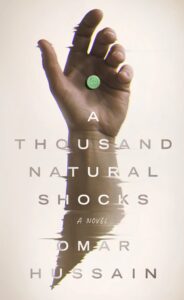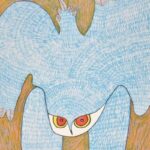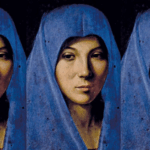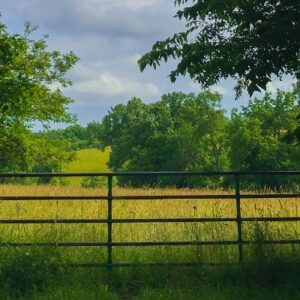All predators have preferred environments. Murky ocean water for the great white. The Serengeti and its plains for the lion. For whatever reason, California has been a favorite for serial killers, coming in second only to New York for the most known cases. Since 1900, it is believed that over 1,600 California residents were murdered by serial killers.
California’s idyllic weather, booming metropolitan areas, the mishmash of socio-economic neighborhoods, the growing suburbs, and plentiful recreational activities only serve as the top side of an attractive rock—sparkling under the sun, a shading of grey and blue, and jagged edges that invite inspection. But the bottom of the rock tells a different story—one that was overtaken by the kinds of creatures better left out of view. For anyone growing up in the state during the 1970s, 80s, and 90s when serial killer activity was at an all-time high, there is no shortage of boogeymen stories about caught, or worse, uncaught killers in the San Francisco Bay Area, Los Angeles County, and the hundreds of miles of coastline in between.
My debut novel, A Thousand Natural Shocks, follows Dash, a journalist by day, identity thief by night, so desperate to outrun one particular event from his past that he soon becomes entangled with a cult promising a way to erase his memories: the Lobotomy Pills. Four doses. One pill a week. With each pill consumed, a person’s memory starts fading away from the earliest memories forward. And in their place, Dash would be given a new identity in a new location. But while Dash is trying to earn the next pill, he is stalked by a mysterious figure he is soon convinced is the Coast Killer—an uncaught dormant serial killer that preyed upon the Monterey Peninsula. As Dash’s memories begin to fade, and as he starts suffering from odd side effects like blackout glitches, he learns the truth about the cult and their true intentions with their memories. With the cult and Coast Killer in pursuit, Dash must decide who he really is and what it means to be good, even if the worst thing he’s ever done haunts him again and again. When it came time to really dig into the Coast Killer and round out his profile, it was important to me that he reflected the kinds of real-life monsters that had traumatized California over many decades. And though there is more than meets the eye when it comes to the Coast Killer, here are the five real-life serial killers that inspired the killer in A Thousand Natural Shocks.
The Zodiac Killer’s Letters: Let’s start with arguably California’s most famous serial killer ever. There have been countless movies, books and shows made about the uncaught killer that stalked victims in the San Francisco Bay Area during the late 60s and continued to play games with police departments well into the 70s. Among the games were the Zodiac’s ciphers and cryptic letters he would write detectives and local newspapers, teasing his identity within the coded ciphers while also claiming more victims than police ever verified. In A Thousand Natural Shocks, I wanted the Coast Killer to lean into the cat and mouse correspondence made famous by the Zodiac. In the book, Dash receives multiple written notes from the Coast Killer containing as many threats as hints and teases.
The Golden State Killer’s Voice: If the Zodiac is California’s most notorious serial killer, the Golden State Killer (also known as the “Original Night Stalker” and “the E.A.R.”) is one of California’s most prolific (thirteen murders and dozens of violent sexual crimes). Eventually caught and identified as Joseph DeAngelo, the Golden State Killer was a brazen maniac who snuck into people’s homes in the middle of the night before committing nightmarish crimes. This was not what I wanted to steal for my book’s killer. Instead, it was the way DeAngelo spoke to victims—sometimes on the phone years after the crimes had been committed just to prolong the torture—that stuck out to me. Years prior to his capture, DeAngelo was caught on a recording after a victim suspected her assailant was repeatedly calling her house and harassing her. In the recording, DeAngelo can be heard speaking in what can best be described as a furious hiss and repeating the phrase, “kill you.” In A Thousand Natural Shocks, the Coast Killer also calls Dash several times, speaking in a similar manner.
Leonard Lake’s & Charles Ng’s Compound: Technically a duo, Leonard Lake and Charles Ng kidnapped, tortured, and killed at least 11 people (the number might be much higher). Truth be told, Lake’s and Ng’s crimes are so disturbing that I couldn’t really stand to dive too deep into them when researching for A Thousand Natural Shocks. However, one of the more unsettling facts from the case was the location of Lake’s and Ng’s crimes—a compound in the Northern California wilderness. The compound contained rooms that were hidden behind other rooms, the access to which only Lake and Ng knew about. There was no escape for the uninitiated. I knew this was a direction to take for the Coast Killer. Instead of a compound in the wilderness, the Coast Killer’s would be found on the Monterey Peninsula. The maze-like structure proved perfect for the Coast Killer and his love for toying with victims, asking them to navigate between rooms while trying to find their escape.
Body Placement (The Hillside Strangers): Serial killers sometimes tell a story with where they leave victims. In most cases, the victim is found at the same location the crime was committed. In others, it’s a drop-off site. For this, I borrowed from the Hillside Strangers, known after their capture as Angelo Buono Jr. and Kenneth Bianchi, who killed at least 10 women in the late 70s. Buono and Bianchi earned their moniker from leaving victims along remote but scenic hillside areas in Los Angeles. Instead of rugged Los Angeles trails, the Coast Killer chooses to leave victims (some surviving) along the rolling sand dunes of Monterey.
Random Victim Release (The Night Stalker): There are not many similarities between my book’s killer and real-life serial killer, Richard Ramirez, also known as the Night Stalker. Ramirez’s devil-worshipping crimes and sloppy brutality almost make him too over the top on which to base a fictional character. However, within his short reign of terror over Los Angeles in 1984-85 that saw him kill at least 13 people, there was one random decision he made in the middle of a home invasion that stuck out to me. He let a woman live despite already trapping her. This break in Ramirez’s M.O. baffled me enough to add it as a minor wrinkle to the Coast Killer—though the motive for doing so in A Thousand Natural Shocks is eventually revealed.
BONUS – The Manson Family: Though Charles Manson and his acolytes did not directly influence the Coast Killer in my book, the longstanding rumors pertaining to Manson’s possible connections to the CIA’s MKUltra experiments played a different role. The experiments, that were recently unpacked in Errol Morris’ new documentary entitled, Chaos: The Manson Murders, manipulated people’s minds and memories using drugs and verbal programming. Sounds perfect for a fictional cult, doesn’t it?
***














